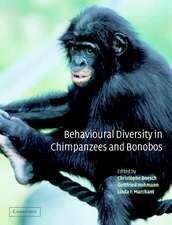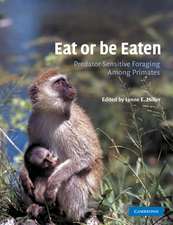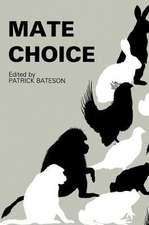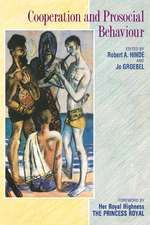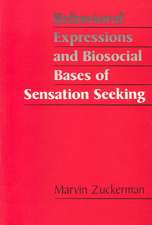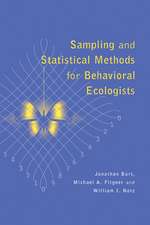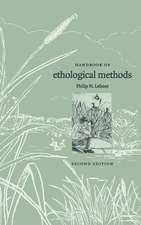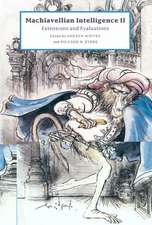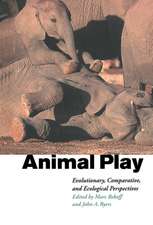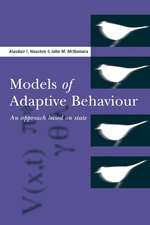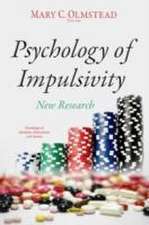Comparative Cognition
Autor Mary C. Olmstead, Valerie A. Kuhlmeieren Limba Engleză Paperback – 14 ian 2015
| Toate formatele și edițiile | Preț | Express |
|---|---|---|
| Paperback (1) | 361.20 lei 3-5 săpt. | +39.26 lei 4-10 zile |
| Cambridge University Press – 14 ian 2015 | 361.20 lei 3-5 săpt. | +39.26 lei 4-10 zile |
| Hardback (1) | 888.18 lei 6-8 săpt. | |
| Cambridge University Press – 14 ian 2015 | 888.18 lei 6-8 săpt. |
Preț: 361.20 lei
Nou
Puncte Express: 542
Preț estimativ în valută:
69.12€ • 71.90$ • 57.07£
69.12€ • 71.90$ • 57.07£
Carte disponibilă
Livrare economică 25 martie-08 aprilie
Livrare express 08-14 martie pentru 49.25 lei
Preluare comenzi: 021 569.72.76
Specificații
ISBN-13: 9781107648319
ISBN-10: 1107648319
Pagini: 481
Ilustrații: 214 b/w illus. 1 table 128 exercises
Dimensiuni: 190 x 245 x 23 mm
Greutate: 0.89 kg
Editura: Cambridge University Press
Colecția Cambridge University Press
Locul publicării:New York, United States
ISBN-10: 1107648319
Pagini: 481
Ilustrații: 214 b/w illus. 1 table 128 exercises
Dimensiuni: 190 x 245 x 23 mm
Greutate: 0.89 kg
Editura: Cambridge University Press
Colecția Cambridge University Press
Locul publicării:New York, United States
Cuprins
Preface; 1. History of comparative cognition; 2. Sensory systems; 3. Memory; 4. Associative processes; 5. Orientation and navigation; 6. Timing and number; 7. Decision making; 8. Causality and tool use; 9. Categorization and concept formation; 10. Social competence; 11. Prosocial behavior; 12. Communication; 13. Learning from others; References; Figure credits; Index.
Recenzii
'Comparative Cognition provides a clear and comprehensive review and an engaging synthesis of the key topics in this rapidly developing field. Like the other classic textbooks on animal cognition this book integrates knowledge of experimental psychology and evolutionary biology, reflecting the roots of this discipline in comparative psychology and ethology. It also contains a number of novel features, with its enhanced emphasis on both evolutionary function and the underlying neural mechanisms. These include feature boxes that describe key concepts in more detail, and researcher profiles that capture the contribution of some of the major figureheads in the field. A particular highlight is the series of questions at the end of each chapter, which encourage students to think more deeply about the issues raised, and to design experiments to test the competing hypotheses.' Nicola S. Clayton, University of Cambridge
''What is it like to be a bat?' Thomas Nagel once posed this question as a thought experiment and in doing so neatly illustrated the fact that we will never be able to experience the world from another animal's perspective. Despite the daunting task, however, Comparative Cognition attempts to do just that. The authors bring decades of research and teaching experience in compiling this valuable volume. The book contains 13 chapters and covers the breadth of comparative cognition in an introductory format that is likely to suit third-year undergraduate university students. Each chapter has a chapter plan, summary points, and ends with a series of discussion topics and further reading. Key terms are highlighted in bold, and defined in a glossary at the end of the volume to help with tricky terminology that is typical of a multidisciplinary field. Learning and teaching is further enhanced with an online tool set including PowerPoint slides … It is perhaps the first textbook that assimilates knowledge from the rapidly developing, cross-disciplinary field of comparative cognition. As such it will be a valuable addition to bookshelf of both undergraduates and lecturers.' Culum Brown, The Quarterly Review of Biology
''What is it like to be a bat?' Thomas Nagel once posed this question as a thought experiment and in doing so neatly illustrated the fact that we will never be able to experience the world from another animal's perspective. Despite the daunting task, however, Comparative Cognition attempts to do just that. The authors bring decades of research and teaching experience in compiling this valuable volume. The book contains 13 chapters and covers the breadth of comparative cognition in an introductory format that is likely to suit third-year undergraduate university students. Each chapter has a chapter plan, summary points, and ends with a series of discussion topics and further reading. Key terms are highlighted in bold, and defined in a glossary at the end of the volume to help with tricky terminology that is typical of a multidisciplinary field. Learning and teaching is further enhanced with an online tool set including PowerPoint slides … It is perhaps the first textbook that assimilates knowledge from the rapidly developing, cross-disciplinary field of comparative cognition. As such it will be a valuable addition to bookshelf of both undergraduates and lecturers.' Culum Brown, The Quarterly Review of Biology
Notă biografică
Descriere
This book introduces cognitive processes and animal behaviour across species, integrating classic studies and contemporary research in psychology, biology and neuroscience.


